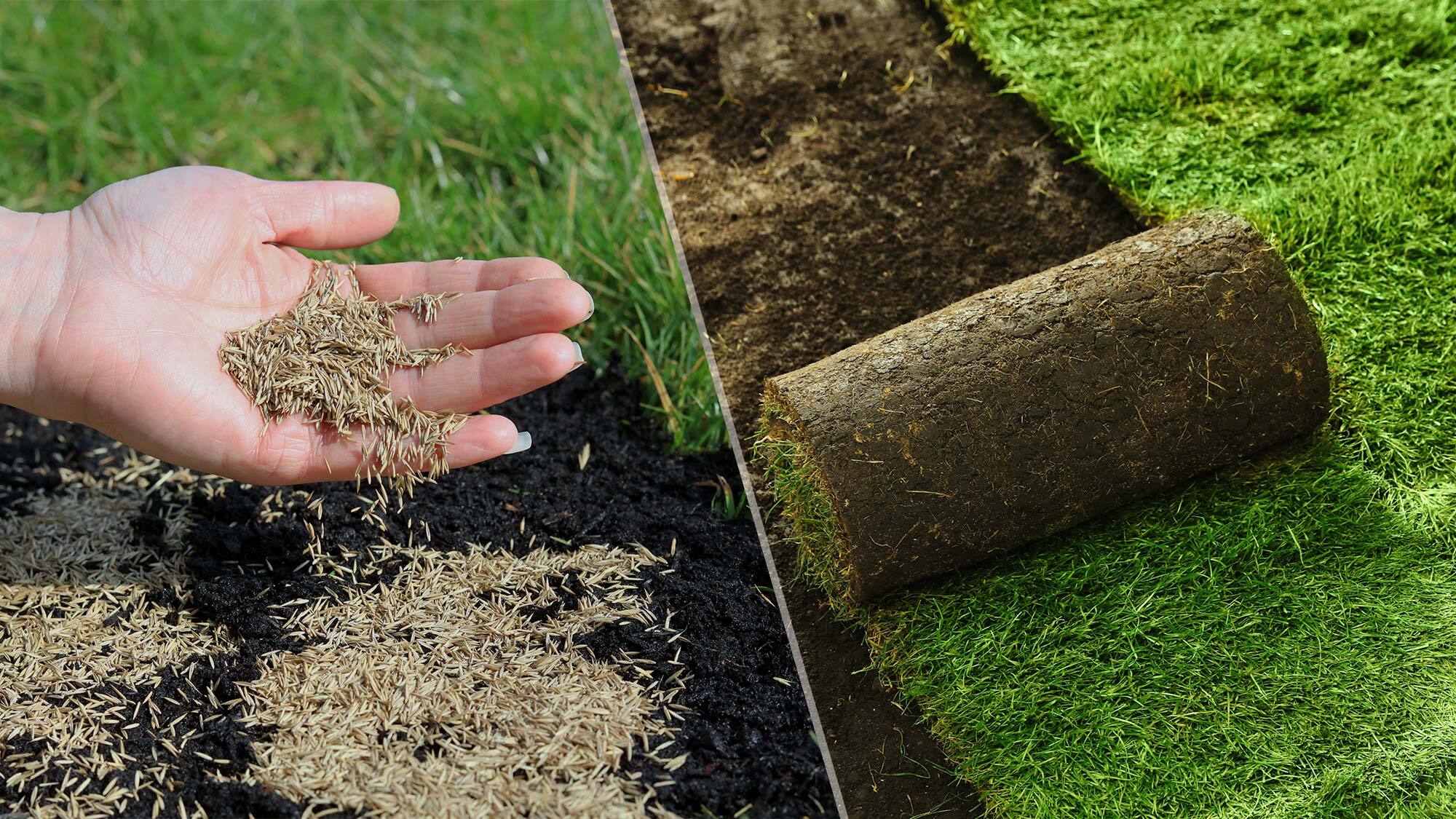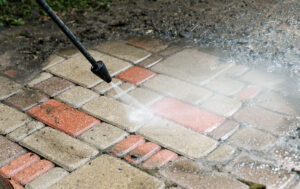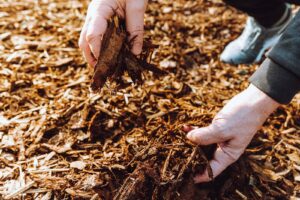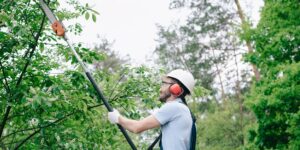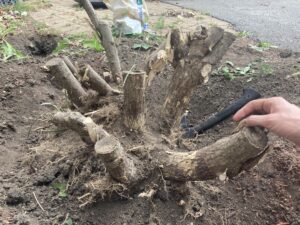Sod vs. Seed: How to Choose the Right Option for Your Perfect Lawn
When you’re establishing a new lawn or renovating a tired one, you’ll likely face the fundamental choice between sod and seed. Both options can deliver the lush, green lawn of your dreams, but they differ significantly in terms of cost, installation effort, maintenance requirements, and time to maturity. Your specific circumstances, goals, and resources will ultimately determine which option best suits your needs.
Understanding Your Lawn Establishment Options
Before diving into the pros and cons of sod versus seed, it’s important to understand what each option entails.
What is Sod?
Sod (sometimes called turf) is pre-grown grass that’s harvested with a thin layer of soil held together by the grass roots. It comes in rolls or pallets and provides an “instant lawn” effect when laid properly. Professional sod farms grow various grass types suited to different climate zones, ensuring you can find an appropriate variety for your region.
When harvested, sod includes mature grass plants along with approximately 1/2 inch of soil and thatch. This established root system gives sod its primary advantage: immediate establishment and a finished appearance upon installation.
What is Seed?
Grass seed consists of dormant embryos within protective seed coats, waiting for the right conditions to germinate and grow. Seed can be applied in various ways—broadcast by hand, with a spreader, hydroseeded (mixed with mulch and water), or incorporated into specialized products like seed mats.
Lawn establishment from seed requires patience as the grass progresses through germination, seedling development, and maturation phases before achieving the density and appearance of a fully established lawn.
Cost Considerations: Budgeting for Your Lawn Project
For many homeowners, cost becomes the deciding factor when choosing between sod and seed. Let’s break down the financial implications of each option.
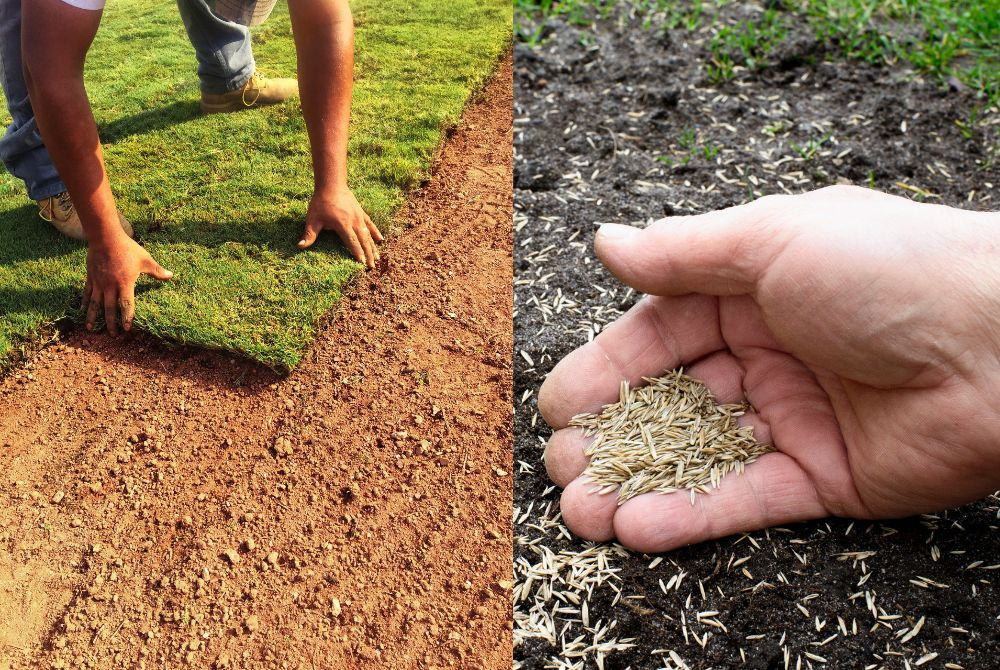
Sod Costs
Sod represents a higher initial investment but delivers immediate results. Sod pricing varies by region, grass type, and quantity purchased, but you can expect to pay between $0.30 to $0.80 per square foot for the material alone. Premium varieties or specialty grasses may cost even more.
When calculating the complete project cost, you’ll need to factor in:
- The sod itself
- Delivery fees
- Soil preparation materials and equipment
- Installation labor (if hiring professionals)
- Initial watering requirements (which can increase your water bill significantly)
For a standard 5,000 square foot lawn, sod materials alone might cost between $1,500 and $4,000, with additional expenses for preparation and installation potentially adding several thousand dollars more if professionally installed.
Seed Costs
Seed offers a much lower entry point, with quality seed mixes ranging from $0.02 to $0.10 per square foot. Even premium seed blends tend to cost substantially less than sod for the same area. A quality seed project for a 5,000 square foot lawn might cost between $100 and $500 for the seed itself.
Additional costs for seeding projects include:
- Soil amendments and starter fertilizer
- Mulch or erosion control materials
- Equipment rental (such as tillers or seeders)
- Irrigation supplies
- Ongoing maintenance products
While the initial material cost is lower with seed, the extended establishment period means you’ll invest more time in maintenance during the critical first few months.
Time to Establishment: How Long Until You Have a Usable Lawn?
One of the most significant differences between sod and seed is the timeline to having a functional lawn space.
Sod Establishment Timeline
Sod provides an immediate green surface, but that doesn’t mean it’s immediately ready for use. Here’s a typical timeline:
- Day of installation: Green appearance achieved
- 10-14 days: Root anchoring begins (avoid heavy traffic)
- 2-3 weeks: Light foot traffic possible
- 4-6 weeks: Sod fully rooted and established for normal use
While you’ll enjoy the appearance of a finished lawn immediately, properly installed sod still requires a restricted-use period to ensure roots establish properly in your soil.
Seed Establishment Timeline
Seed requires significantly more patience, with timelines varying by grass species and growing conditions:
- 5-30 days: Initial germination (depending on species)
- 4-8 weeks: First mowing possible
- 8-12 weeks: Light traffic tolerable
- 1 full growing season: Complete establishment for normal use
Cool-season grasses like Kentucky bluegrass, perennial ryegrass, and fescues typically germinate faster than warm-season varieties like Bermuda or zoysia. Weather conditions, soil temperature, and moisture levels also significantly impact germination rates and establishment speed.
Installation Effort: DIY Potential vs. Professional Requirements
The work involved in establishing your lawn varies considerably between these options.
Sod Installation Process
Installing sod requires moderate physical effort but minimal specialized knowledge. The basic process includes:
- Soil preparation (removing debris, tilling, leveling)
- Light fertilization
- Laying sod strips in a staggered pattern (similar to bricklaying)
- Rolling to ensure good soil contact
- Thorough watering
While manageable as a DIY project, sod installation is time-sensitive. Once delivered, sod should be installed within 24 hours to prevent deterioration. The weight of sod pallets (often 1,500-3,000 pounds each) usually requires coordinated delivery and possibly equipment for moving.
For larger lawns, professional installation often makes sense given the time constraints and physical demands, adding approximately $0.50 to $1 per square foot to your project cost.
Seed Installation Process
Seeding offers more flexibility in timing and approach but requires attention to detail:
- Thorough soil preparation (testing, amending, tilling, grading)
- Seed selection appropriate for your conditions
- Proper seed distribution (often in two directions for even coverage)
- Light covering or mulching
- Initial watering and ongoing moisture management
Seeding is generally more forgiving regarding timing (within the appropriate season) and can be done in phases if needed. The process demands less physical strength than handling sod but requires more precision in seed distribution and ongoing care during the establishment period.
Growing Conditions: Which Option Works Best in Your Environment?
Your climate, soil conditions, and site characteristics should influence your choice between sod and seed.
Best Conditions for Sod Success
Sod performs optimally when:
- You need erosion control on slopes or areas prone to washing out
- You’re installing during marginal seasons when seed might struggle to germinate
- You have access to consistent water for the intensive initial irrigation needs
- Your soil has been properly prepared with good drainage and appropriate pH
- You’re working with a site that receives adequate sunlight for your chosen grass variety
Sod can overcome some challenging situations thanks to its established root system, but it’s not a miracle solution for fundamentally problematic sites. Poor drainage, extreme shade, or highly compacted soils will eventually cause problems for sod just as they would for seeded lawns.
Best Conditions for Seed Success
Seeding is particularly advantageous when:
- You’re working with the optimal growing season for your selected grass type
- The site allows for consistent moisture management during germination
- You’re dealing with unusual shapes or areas where sod cutting would create excessive waste
- You want to establish specialty grass varieties that may not be available as sod
- You’re overseeding an existing lawn rather than starting from scratch
- Budget constraints make sod impractical for your project size
According to the United States Department of Agriculture, timing is critical for seeding success. For warm-season grasses, late spring to early summer provides ideal conditions, while cool-season varieties establish best when planted in early fall or, as a second choice, early spring. You can find detailed guidance on optimal planting windows for your specific region on their website: USDA Plant Hardiness Zone Map.
Water Requirements: Managing Moisture for Establishment
Both sod and seed require careful water management during establishment, but their needs differ in intensity and duration.
Watering Requirements for New Sod
Newly installed sod demands intensive watering to prevent drying and ensure root establishment:
- First week: Water multiple times daily to keep constantly moist
- Second week: Deep watering once or twice daily
- Weeks 3-4: Gradually reduce to deeper, less frequent watering
- After establishment: Transition to normal maintenance watering
During hot weather, new sod may require watering up to three times daily for the first week. This intensive initial period typically lasts 2-3 weeks, after which watering frequency decreases substantially.
Watering Requirements for New Seed
Seed requires consistent moisture over a longer period:
- Germination phase: Light, frequent watering to keep the top inch of soil consistently moist (often 2-3 times daily in warm weather)
- Seedling establishment: Gradual transition to deeper, less frequent watering as roots develop
- Establishment phase: Regular deep watering to encourage deep root growth
The critical moisture period for seed typically extends 3-4 weeks for initial germination, followed by another 4-8 weeks of careful monitoring as seedlings develop. This extended period of moisture management represents one of the biggest challenges of the seeding method.
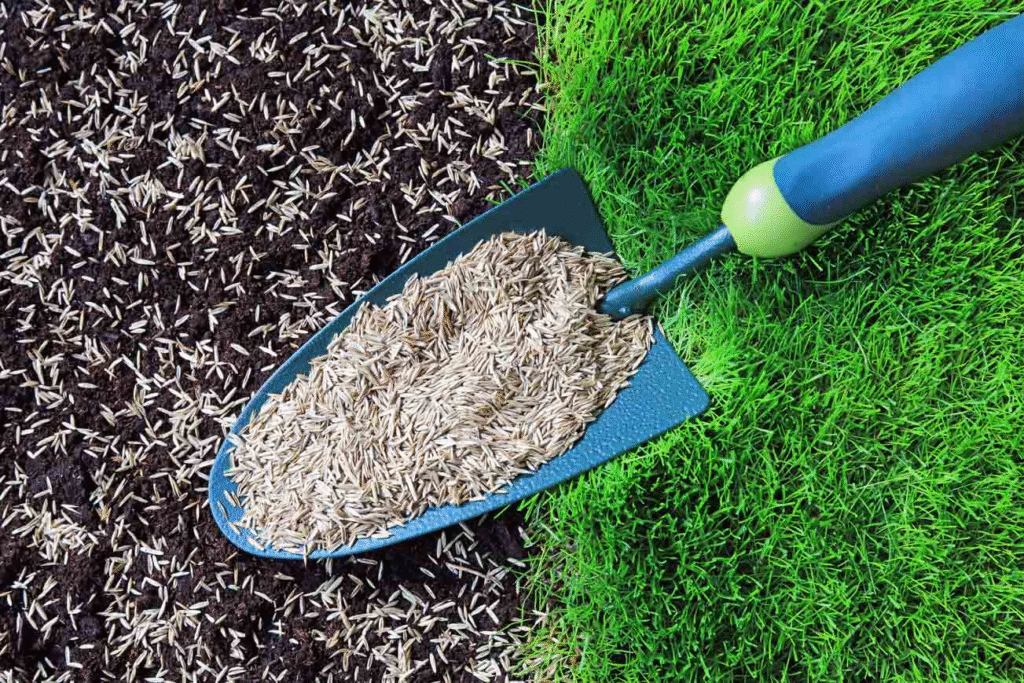
Comparative Analysis: Sod vs. Seed at a Glance
The following table provides a side-by-side comparison of key factors to consider when choosing between sod and seed:
| Factor | Sod | Seed |
|---|---|---|
| Initial Cost | $0.30-$0.80/sq ft (material only) | $0.02-$0.10/sq ft (material only) |
| Installation Labor | Moderate-High | Low-Moderate |
| Time to Green Appearance | Immediate | 5-30 days |
| Time to Full Usability | 4-6 weeks | 8-12 weeks minimum |
| Water Requirements | Intensive but shorter duration | Moderate but extended duration |
| Variety Selection | Limited to commonly available types | Extensive options including specialty varieties |
| Weed Competition | Minimal | Significant during establishment |
| Erosion Control | Immediate | Poor until establishment |
| DIY Difficulty | Moderate (physical) | Moderate (technical) |
| Best Season for Installation | Almost any frost-free period | Species-dependent optimal windows |
Maintenance Differences: Early Care Requirements
The initial maintenance needs for sod and seed differ significantly in focus and intensity.
Early Sod Maintenance
Newly installed sod requires:
- Careful monitoring for moisture levels, especially at seams
- Limited traffic until rooting is established
- Initial fertilization approximately 4-6 weeks after installation
- Regular mowing once the sod is anchored (typically after 2-3 weeks)
- Attention to any shrinkage between pieces that may require filling
The maintenance intensity for sod is front-loaded, with the first month being most critical. After proper establishment, sod transitions to normal lawn maintenance requirements.
Early Seed Maintenance
Newly seeded lawns demand:
- Precise moisture management throughout germination and seedling stages
- Protection from birds and other seed predators
- Weed control once seedlings are sufficiently established
- Delayed mowing until appropriate height is reached (typically 3-4 inches)
- Possible reseeding of thin or bare patches
- Protection from foot traffic until well established
Seed requires a longer period of specialized care, often extending through the first full growing season. The need for consistent moisture without creating waterlogged conditions presents a particular challenge for many homeowners.
Special Considerations for Different Property Types
Your specific property characteristics should influence your choice between sod and seed.
Considerations for New Construction
New homes present unique challenges for lawn establishment:
- Construction compaction often requires extensive soil remediation
- Debris may be buried beneath the surface, affecting drainage and growth
- Timing constraints may force installation during non-optimal seasons
- Builder-installed landscapes often receive minimal preparation
For new construction, sod often provides better initial results given these challenges, especially when homeowners need to comply with HOA requirements or municipal ordinances requiring prompt landscape establishment. The Environmental Protection Agency (EPA) also notes that immediate soil stabilization with vegetation helps prevent construction site runoff and erosion, which can be achieved more quickly with sod (EPA Stormwater Best Management Practices).
Considerations for Lawn Renovation
When renovating an existing lawn, different factors come into play:
- Existing soil may already have beneficial microorganisms
- Irrigation systems may already be in place
- Partial renovation can often be accomplished with overseeding
- Existing problems need identification and correction before either solution is applied
For renovations, the decision often depends on the extent of the problems and desired timeframe for results. Partial renovations typically favor seeding approaches, while complete overhauls might justify the investment in sod.
Making Your Final Decision: Key Questions to Ask Yourself
To determine which option best suits your specific situation, consider these questions:
Timeline Considerations
- How quickly do you need a usable lawn space?
- Are there external deadlines (such as HOA requirements or upcoming events)?
- Can you invest time in daily watering for several weeks?
Budget Factors
- What is your total budget for the lawn project?
- Are you including all costs (preparation, materials, labor, water) in your calculations?
- Would phasing the project (doing sections over time) make sod more affordable?
Site Evaluation
- Does your site have challenging conditions like slopes or shade?
- Is reliable irrigation available throughout the establishment period?
- What are the soil conditions, and have you done proper testing?
Personal Factors
- Do you have the physical ability to handle sod installation or the technical knowledge for proper seeding?
- Will you be personally maintaining the lawn or hiring professionals?
- How important is having specific grass varieties that might only be available as seed?
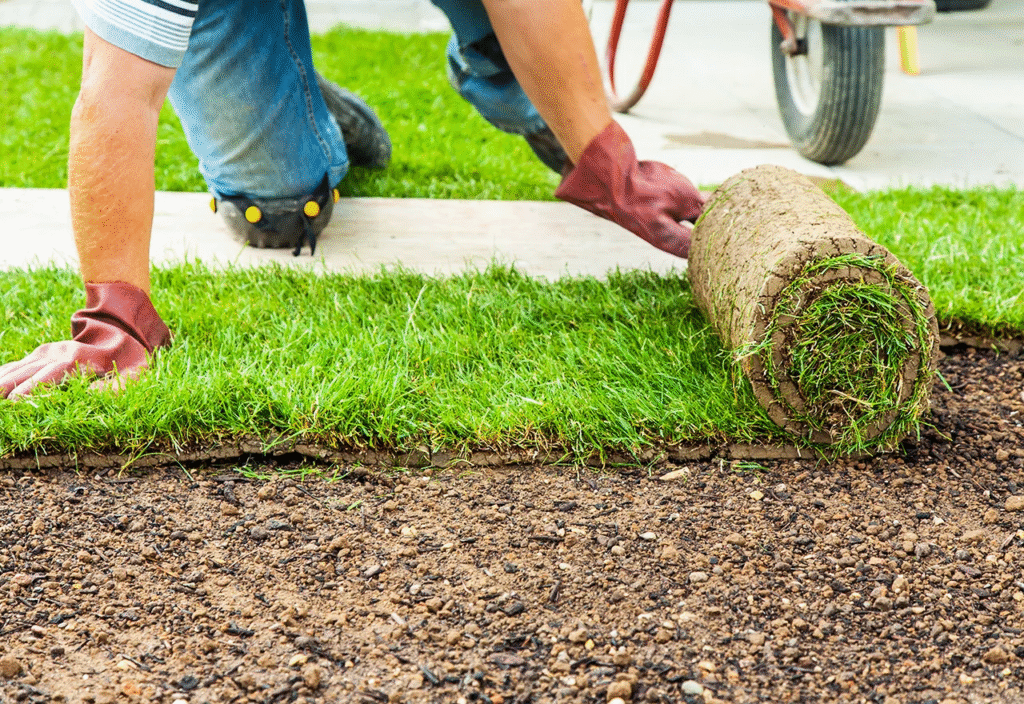
Hybrid Approaches: Combining Methods for Optimal Results
Many successful lawn projects actually combine elements of both seeding and sodding approaches. Consider these hybrid strategies:
Strategic Sodding with Complementary Seeding
This approach involves:
- Installing sod in high-visibility areas or erosion-prone zones
- Seeding larger or less critical areas
- Ensuring compatible grass types between sod and seed selections
This method offers the immediate impact of sod where it matters most while keeping overall costs manageable.
Sodding Now, Overseeding Later
Another effective strategy involves:
- Installing sod for immediate results
- Overseeding with complementary grass varieties during optimal seasons
- Gradually diversifying your lawn’s composition for greater resilience
This approach provides the instant gratification of sod while allowing for lawn improvement over time.
Conclusion: Balancing Immediate Results with Long-Term Success
The choice between sod and seed ultimately comes down to balancing your priorities regarding time, budget, and specific site conditions. Sod provides immediate results at a higher cost, while seed offers economy and variety but requires patience and diligent care.
For many homeowners, the decision isn’t strictly either-or. Strategic use of both methods—sod in critical areas combined with seeding in others—often provides the most practical solution. Whatever method you choose, thorough soil preparation remains the foundation of success.
By realistically assessing your site conditions, budget constraints, timeline needs, and maintenance capacity, you can make an informed decision that leads to the healthy, beautiful lawn you envision. Remember that whether you choose sod, seed, or a combination approach, proper ongoing maintenance will ultimately determine your lawn’s long-term success.
